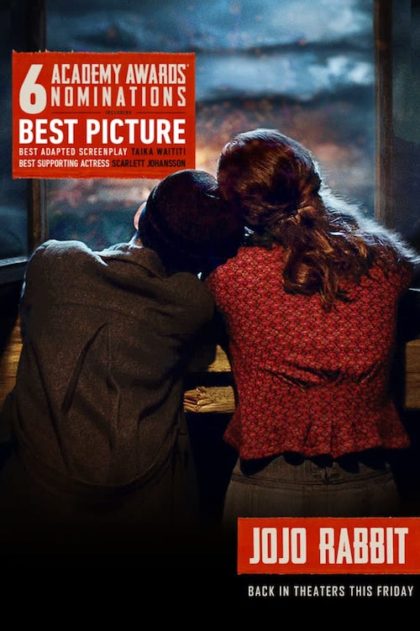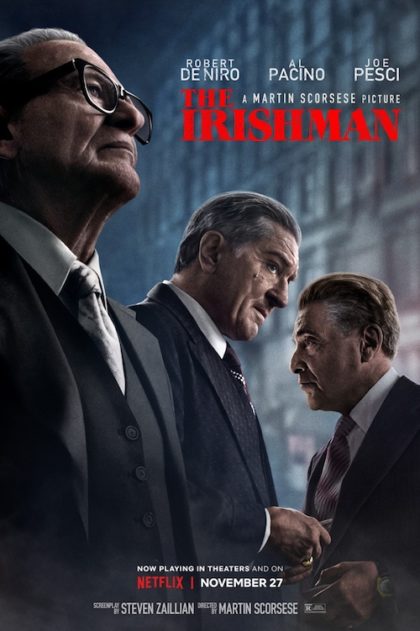In an ongoing series, Drew Trotter of the Consortium of Christian Study Centers is sharing his reflections on this year's Academy Awards Best Picture Nominees. For the whole series, click here. Image Credit: The Joker Promotional Image, from gallery at https://www.warnerbros.com/movies/joker (Fair Use: Criticism) Joker (R, 122 mins.) Director: Todd Phillips. Writers: Todd Phillips and Scott Silver (screenplay). Based on characters created by: Bob Kane, Bill Finger, Jerry Robinson. Cast: Joaquin Phoenix, … [Read more...] about Oscars Film Reflection Series: Joker
Oscars 2020 Series
Oscars Film Reflection Series: Jojo Rabbit
In an ongoing series, Drew Trotter of the Consortium of Christian Study Centers is sharing his reflections on this year's Academy Awards Best Picture Nominees. For the whole series, click here. Image Credit: Jojo Rabbit Promotional Image, from https://tickets.jojorabbit.com/ (Fair Use: Criticism) Jojo Rabbit (PG-13, 108 mins.) Director: Taika Waititi. Writers: Taika Waititi (screenplay), Christine Leunens (novel, Caging Skies). Cast: Roman Griffin Davis, Thomasin McKenzie, Scarlett Johansson, Taika Waititi, … [Read more...] about Oscars Film Reflection Series: Jojo Rabbit
Oscars Film Reflection Series: The Irishman
In an ongoing series, Drew Trotter of the Consortium of Christian Study Centers is sharing his reflections on this year's Academy Awards Best Picture Nominees. We welcome you to watch along with the series and share your thoughts in the comments or on Facebook. This week, continuing in alphabetical order, Drew invites us to reflect with him on The Irishman. For the whole series, click here. The Irishman (R, 209 mins.) Director: Martin Scorsese. Writers: Steven Zaillian (screenplay), Charles Brandt (book). … [Read more...] about Oscars Film Reflection Series: The Irishman
Oscars Film Reflection Series: Ford v Ferrari
Image Credit: Ford v Ferrari Promotional Image, from: https://www.20thcenturystudios.com/movies/ford-v-ferrari (Fair Use: Criticism) In an ongoing series, Drew Trotter of the Consortium of Christian Study Centers will be sharing his reflections on this year's Academy Awards Best Picture Nominees. We welcome you to watch along with the series and share your thoughts in the comments or on Facebook. This week, Drew invites us to reflect with him on Ford v Ferarri. For Drew's introductory post, click here. Ford v … [Read more...] about Oscars Film Reflection Series: Ford v Ferrari
Loving Your Neighbor By Watching the Oscar Best Picture Nominees
Can watching movies help you live out Christ's command to love your neighbor? We welcome Drew Trotter, Executive Director of the Consortium of Christian Study Centers, to the ESN blog for a series on the 2020 Best Picture Oscar nominees. If you missed any of them this year, we invite you to watch along as Drew unpacks how they can be springboards to conversation with colleagues, students, and other neighbors in our lives. Christians go to the movies for a number of different reasons. Most, if not all, of us go, … [Read more...] about Loving Your Neighbor By Watching the Oscar Best Picture Nominees




